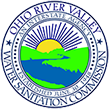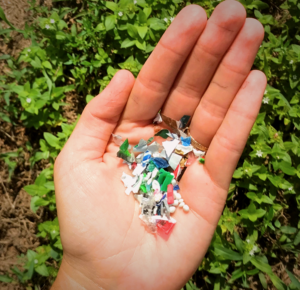Microplastics: Small Plastics, Big Problem
Most items that are an integral part of our daily routine are made from plastics. Plastic is an incredibly versatile and durable material, which is why it is so popular today. It is the most commonly found type of debris in surface waters worldwide-including ponds, rivers, and oceans. Certain cosmetics, furniture, containers, appliances, packaging, and even synthetic clothing can lead to the release of microplastics into our environment and water systems.
As plastics are exposed to sun, wind, and water, they begin to degrade into smaller pieces. Plastic debris that are less than five millimeters in length (about the size of a pencil eraser) are referred to as “microplastics.” Because plastics are made from petroleum, they do not decompose. Instead, they continue to persist in our environment, adsorbing other contaminants from polluted runoff and becoming increasingly toxic.
Aquatic species can become entangled in plastic debris or mistake microplastics for food. Once ingested, these toxic particles fill the stomachs of animals and leach chemicals into their muscle and tissue. Microplastics can be passed up the trophic levels, affecting many different species. As our food chain becomes more permeated with plastics, it is likely that it can make its way to our dinner plates.
Due to the wide range of microplastics particle size, densities, and compositions, as well as limited technologies, they are difficult to characterize and quantify. Additional research is needed to fully understand the environmental and human health impacts.
Simple ways to reduce microplastic pollution are achieved by using reusable items to replace single use or disposable items such as bags, water bottles, cutlery, and straws. Additionally, choosing more sustainable packaging items such as cardboard or other recyclable whenever possible reduces plastic waste. Plastic litter left on the landscape that is later picked up by stormwater and directed into our waterways is the number one contributor of plastic pollution. Help be the solution to pollution by properly disposing of trash and getting involved in the Ohio River Sweep litter cleanup program, an annual volunteer cleanup that extends the entire length of the Ohio River and its tributaries throughout the basin.
Learn more about ongoing microplastics research and methodologies
- Microplastics Articles and Resources
- Microplastics Research
- Assessing Methods of Measuring Microplastics in Water


